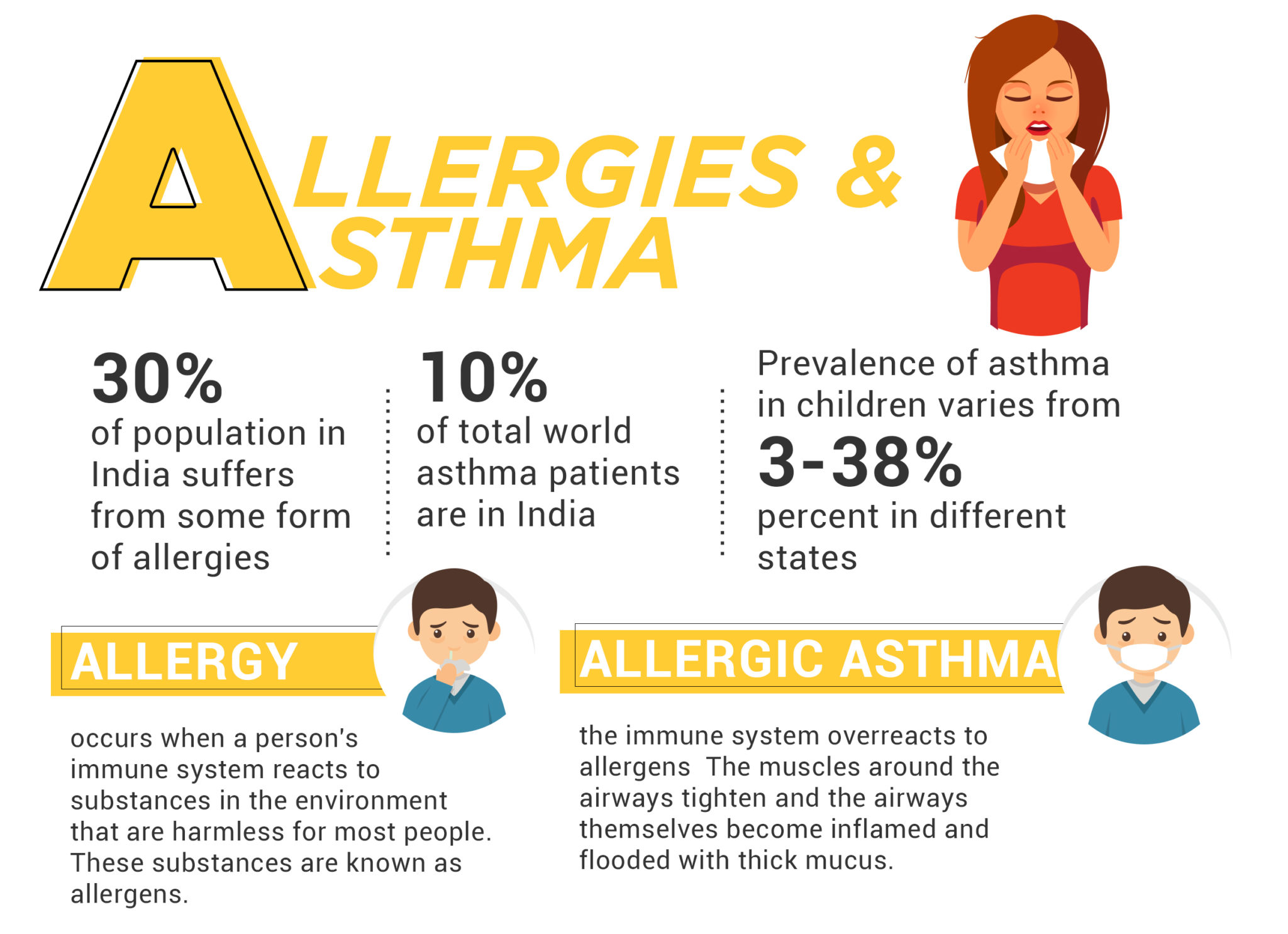
Allergic reactions occur when a person’s immune system reacts abnormally to normally harmless substances, present in the environment. A substance that causes a reaction is called an allergen.
The burden of allergic diseases in India has been on an uprising trend in terms of prevalence as well as severity. These allergic diseases comprise of asthma, rhinitis, anaphylaxis, drug, food and insect allergy, eczema and urticaria and angioedema. Approximately 20% to 30 % of total population suffers from at least one of these allergic diseases in India. A study carried, over 30 years ago in Delhi reported around 10% allergic rhinitis and 1% asthma in 1964. Thereafter later studies have reported that 20% to 30% of the population suffer from allergic rhinitis and that 15% develop asthma.
Recently, a multi-centre population study, Indian Study on Epidemiology of Asthma, Respiratory Symptoms and Chronic Bronchitis (INSEARCH) has also been conducted. The study covered 12 centres comprising of both rural and urban areas spread over different parts of India. The prevalence of bronchial asthma pooled for all the 12 centres was found to be 2.05% (range, 0.4%–4.8%). Advancing age, smoking, household environmental tobacco smoke (ETS) exposure, asthma in a first degree relative and use of unclean cooking fuels have been associated with increased odds of asthma.
